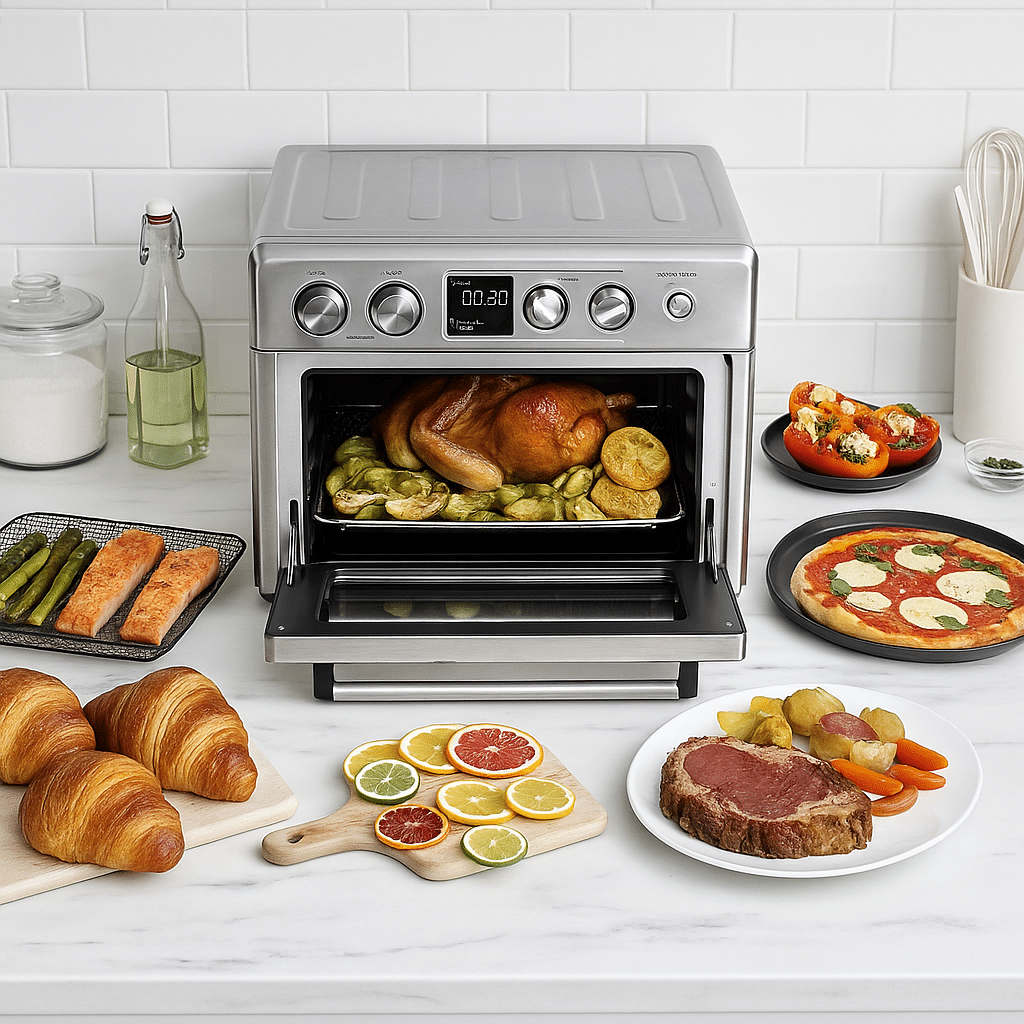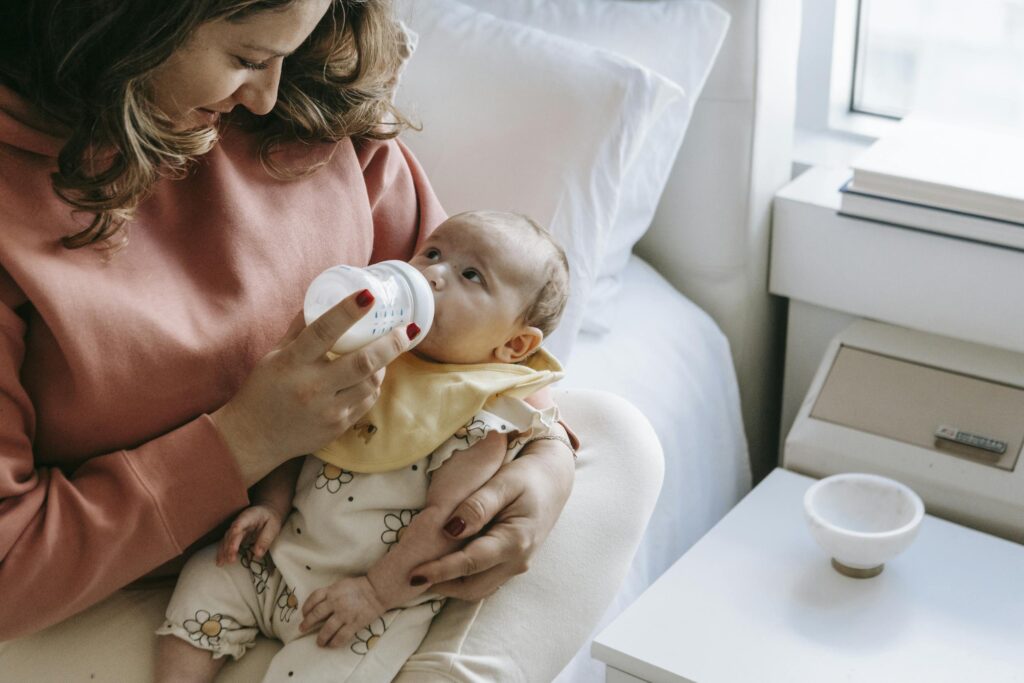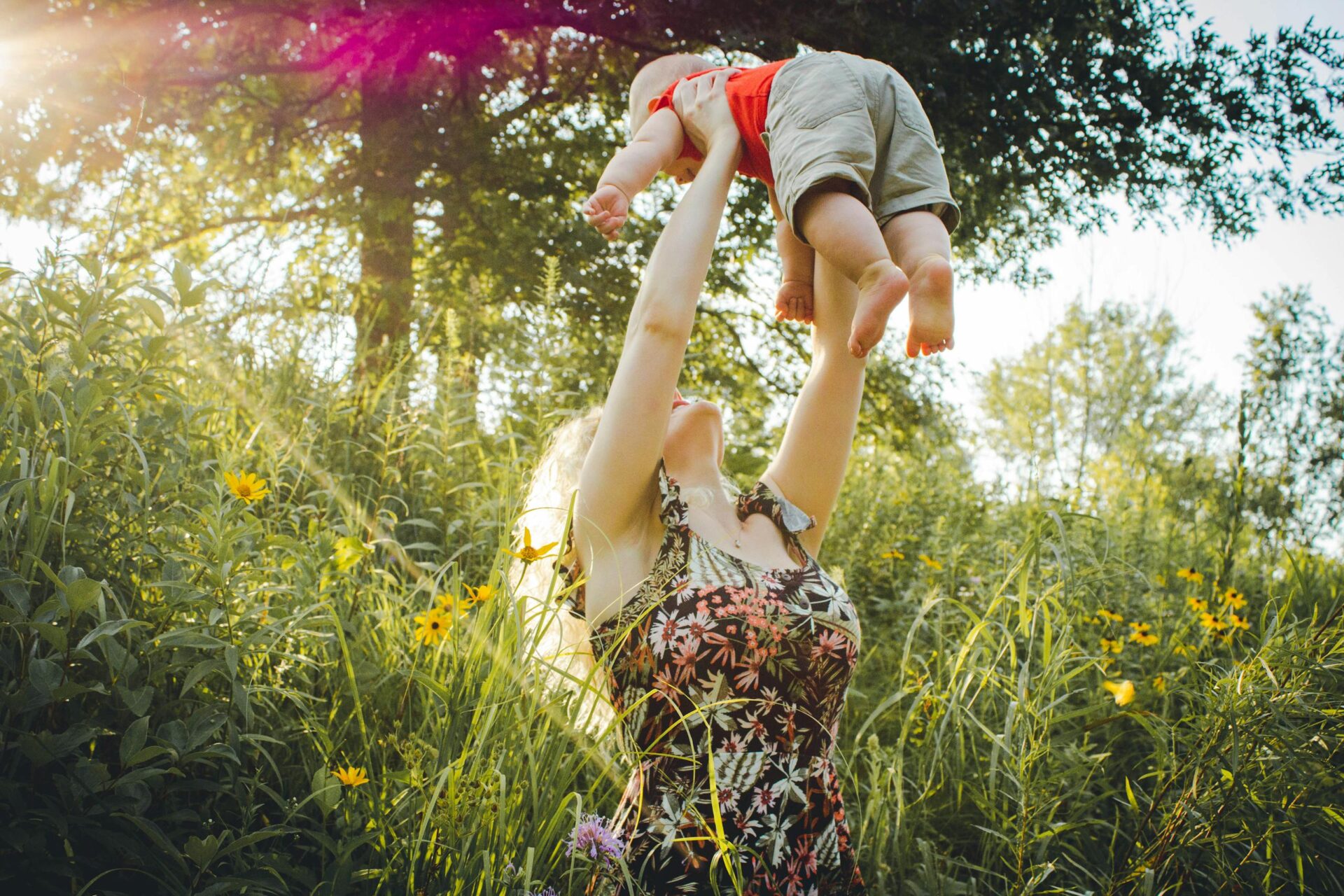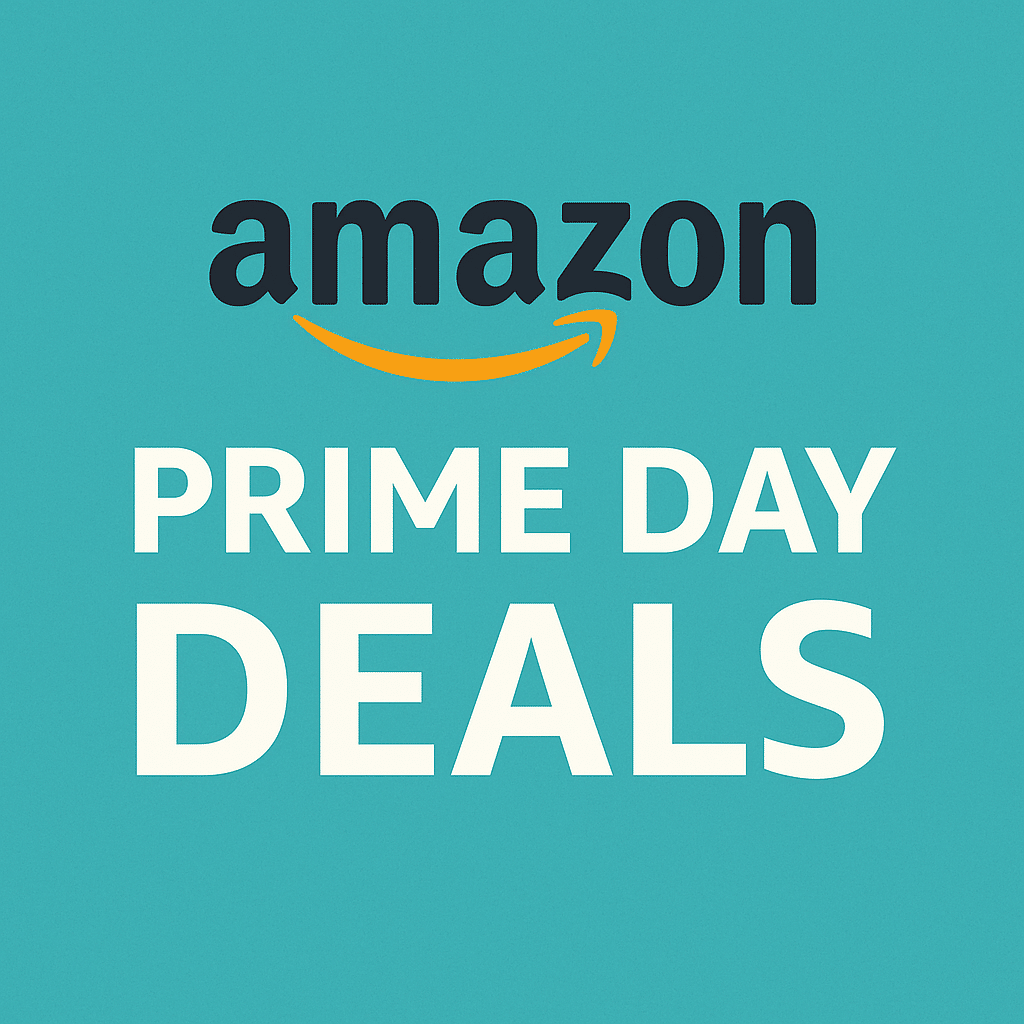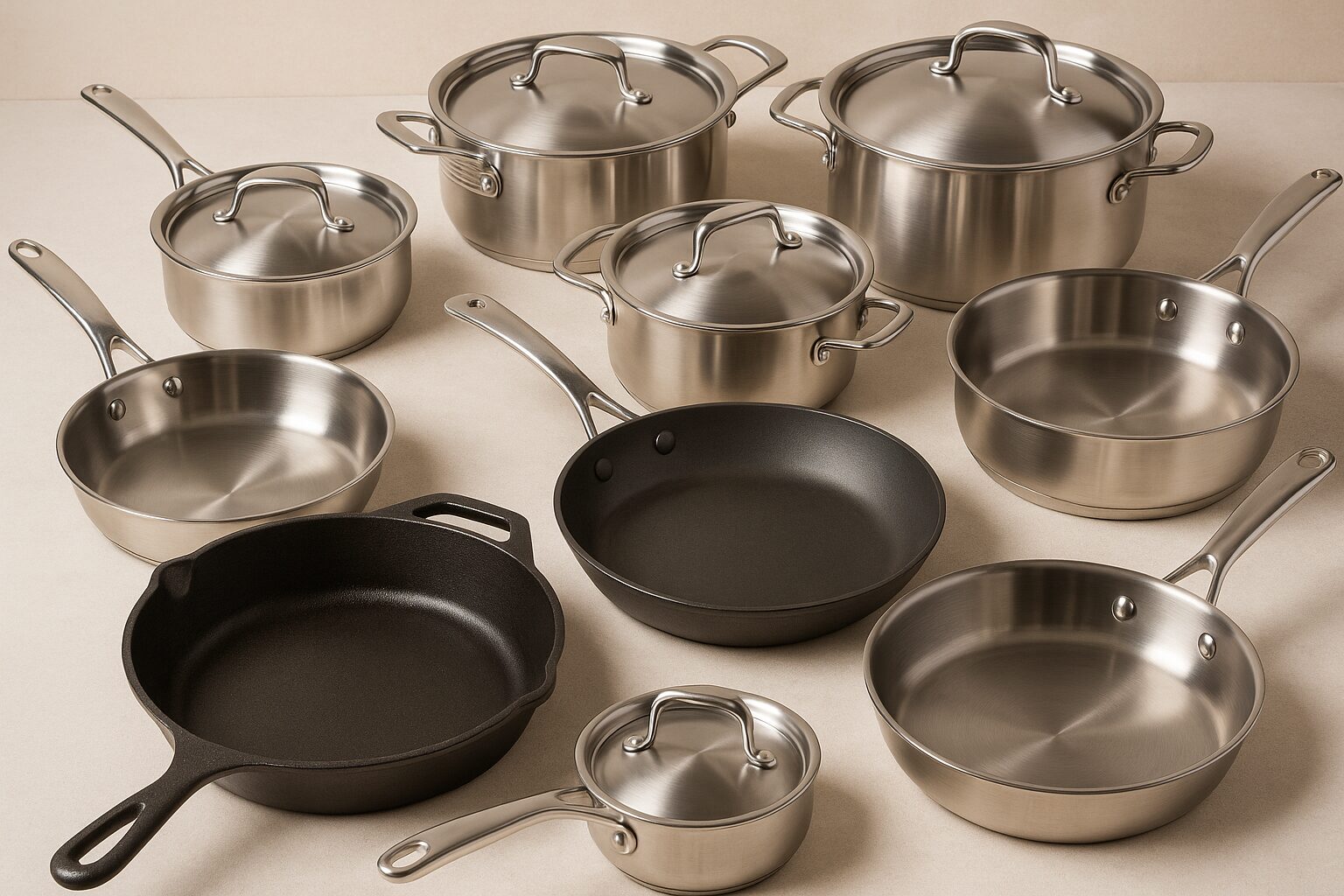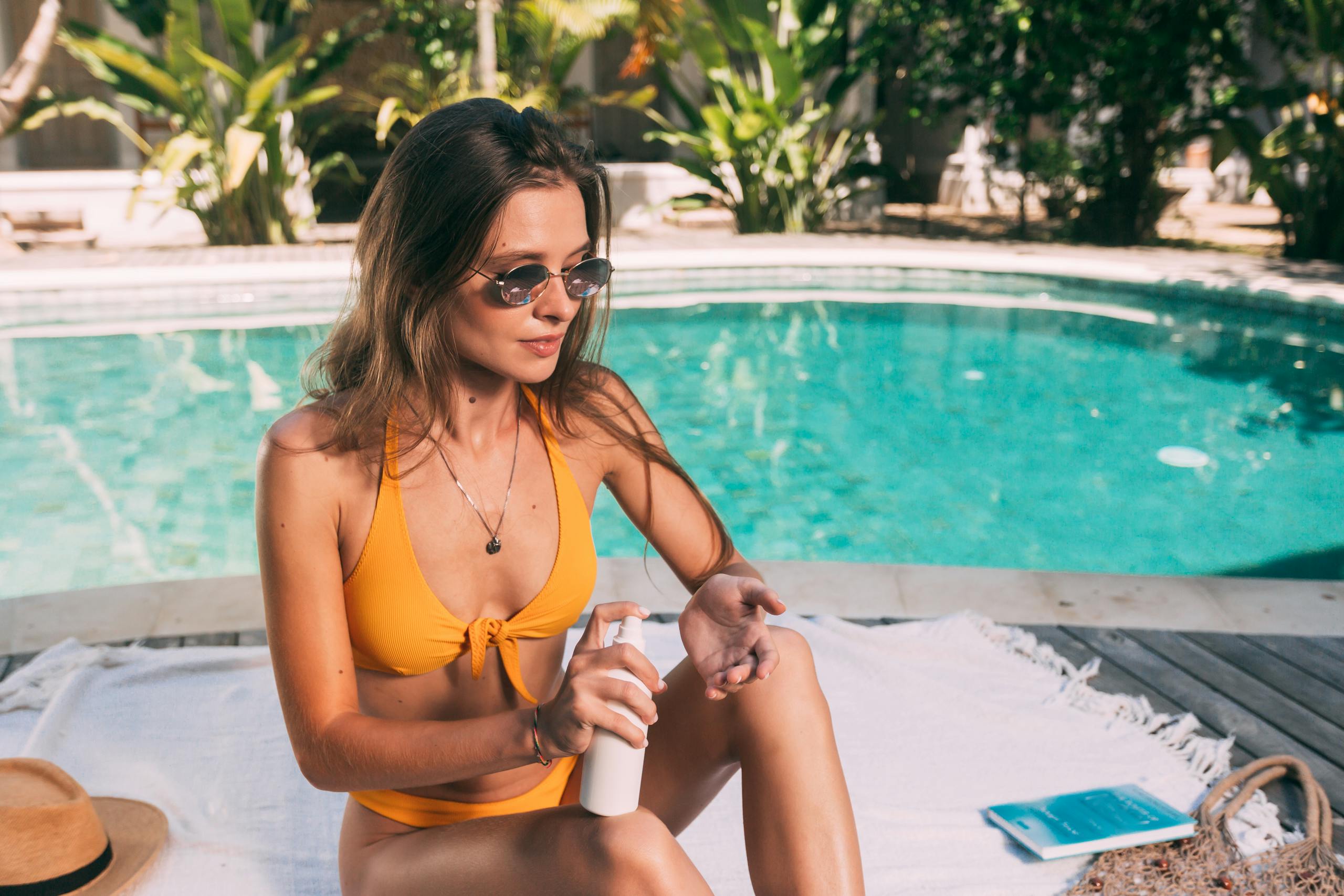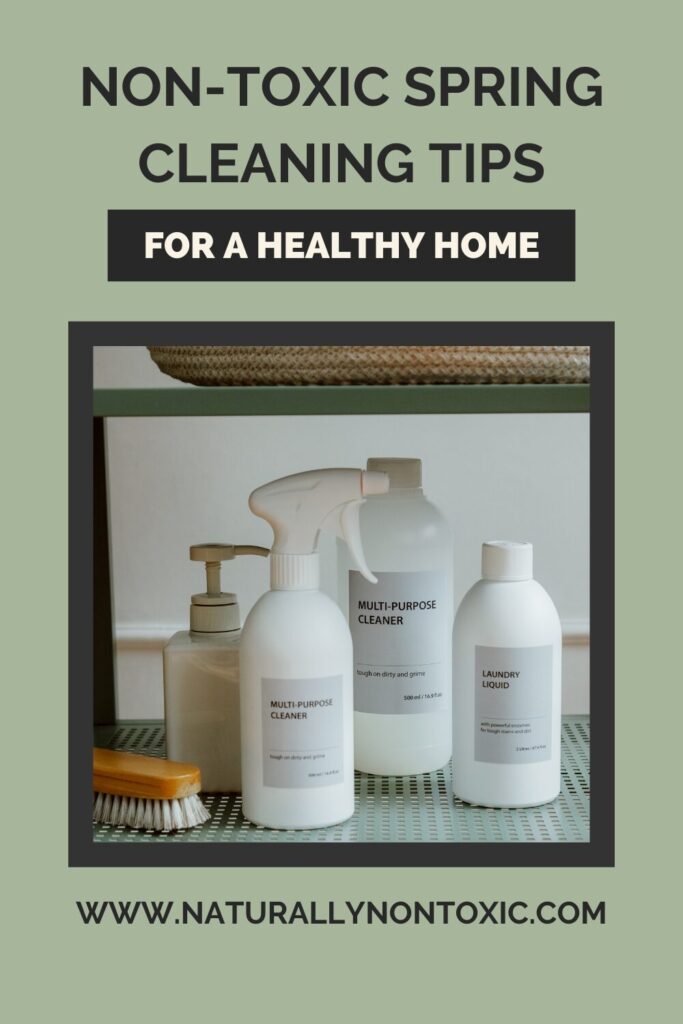
Spring is the perfect time to refresh your home, but traditional cleaning products are often loaded with harsh chemicals that can impact indoor air quality and pose health risks.
This spring cleaning guide will show you how to detox your home, swap out harmful products for safe, non-toxic alternatives, and embrace a greener, healthier way to clean.
We’ll focus on the most toxic cleaning supplies and safe, effective non-toxic swaps for a truly chemical-free cleaning experience.
What Makes a Cleaning Product Toxic?
common toxic Ingredients
Phthalates (Found in: Air fresheners, scented cleaners, dish soaps)
Phthalates are used to make fragrances last longer, but they come with a hidden cost: they’re known endocrine disruptors, meaning they can mess with your hormones. Since companies don’t have to disclose fragrance ingredients, you might not even see “phthalates” on the label—just “fragrance” or “parfum.”
Ammonia (Found in: Glass cleaners, bathroom cleaners, polishes)
Ammonia is great at making mirrors and windows streak-free, but it’s a nightmare for your lungs. Breathing it in can irritate your respiratory system, and mixing it with bleach creates a highly toxic gas.
Formaldehyde (Found in: Disinfectants, mold removers, even some laundry products)
Yes, the same chemical used to preserve dead bodies is lurking in household cleaners. Formaldehyde is a known carcinogen, meaning it’s linked to cancer, and it can also cause skin irritation and breathing issues with prolonged exposure.
Chlorine (Found in: Bleach, toilet bowl cleaners, mildew removers)
Chlorine is often used to kill bacteria, but it’s also harsh on your body. It can irritate your skin, eyes, and lungs—and when mixed with ammonia (which happens more often than you’d think), it creates toxic chloramine vapors that can be deadly in high concentrations.
How to Read Cleaning Product Labels
Cleaning product labels can be downright confusing. Brands love to throw around words like “green,” “natural,” or “eco-friendly”—but that doesn’t mean they’re actually safe. Here’s how to cut through the marketing fluff and spot truly non-toxic products.

1. Watch Out for the Word “Fragrance”
If you see “fragrance” or “parfum” on an ingredient list, that’s a red flag. Companies aren’t required to disclose what’s inside their fragrance blends, and they often contain phthalates, synthetic musks, and other hormone-disrupting chemicals. Look for products that are labeled “fragrance-free” or use essential oils for scent instead.
2. Avoid Greenwashing Traps
Terms like “natural,” “eco-friendly,” and “plant-based” are not regulated, so any brand can slap them on a bottle—even if the product is full of toxic chemicals. Instead, look for strict third-party certifications that actually hold brands accountable:
3. Learn the Worst Offenders
Some toxic ingredients won’t be obvious, so it helps to memorize the big ones:
4. The Fewer Ingredients, the Better
A good rule of thumb: if the ingredient list is short and made up of recognizable names (think vinegar, baking soda, essential oils), it’s probably a safer choice. If it looks like a chemistry experiment, proceed with caution.
5. Trust Transparency
Brands that are truly non-toxic will fully disclose all ingredients on their label or website. If you have to dig for answers, that’s usually a bad sign. Look for companies that take the guesswork out by being upfront about what’s inside.
Knowing how to read labels is the first step to choosing safer, chemical-free cleaning products. Once you learn what to avoid, it’s much easier to find options that actually live up to their “non-toxic” claims.
The Truth About Fragrances: Why ‘Fresh Scent’ Isn’t Always Safe
That “fresh linen” or “ocean breeze” scent in your favorite cleaner? It’s probably a cocktail of synthetic chemicals that brands aren’t required to disclose. The term “fragrance” (or “parfum”) on a label can hide hundreds of undisclosed ingredients—many of which are linked to allergies, hormone disruption, and even long-term health risks.
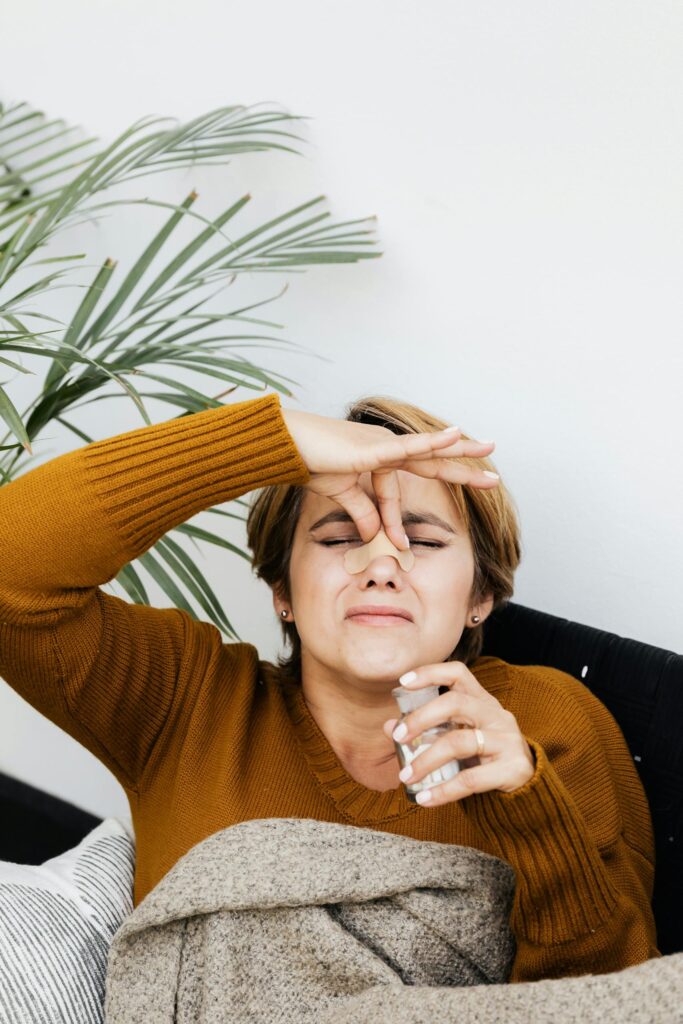
What’s Hiding in “Fragrance”?
Manufacturers claim their fragrance blends are “trade secrets,” which means they don’t have to tell you what’s inside. But independent testing has found some of the most toxic chemicals lurking in these mystery mixtures, including:
Some brands market their products as containing “natural fragrance” or “essential oil blends”—but that doesn’t necessarily mean they’re safe. Many still include synthetic enhancers, solvents, and preservatives that don’t have to be disclosed. Even essential oils, when poorly sourced or mixed with harsh chemicals, can contain allergens or contaminants.
How to Avoid Toxic Fragrances
The best way to protect yourself? Skip scented products altogether or look for brands that fully disclose their fragrance ingredients. Here’s what to check for:
If a brand isn’t transparent about what’s in their fragrance blend, assume there’s something to hide. A truly non-toxic home starts with knowing exactly what you’re bringing into your space.
Do You Really Need Antibacterial Cleaners?
For years, we’ve been told that antibacterial cleaners are the gold standard for keeping our homes germ-free. But here’s the truth: most households don’t need them, and in many cases, they do more harm than good.
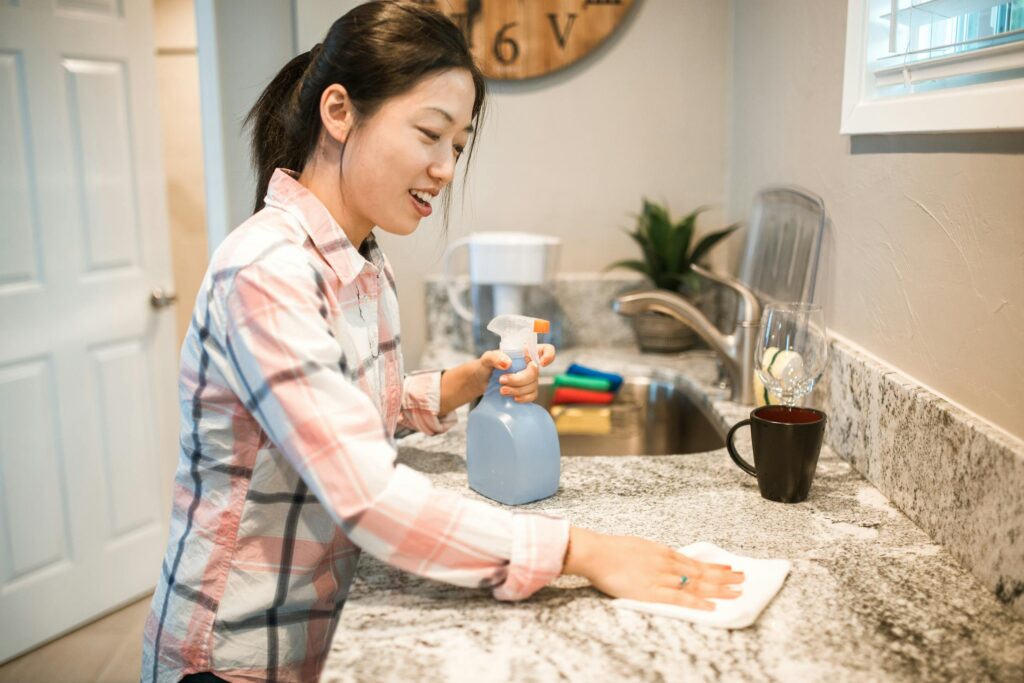
1. Antibacterial Doesn’t Mean Healthier
Regular soap and water remove just as many germs as antibacterial products. The difference? Antibacterial cleaners contain harsh chemicals like triclosan and triclocarban, which are linked to:
The FDA even banned triclosan in hand soaps in 2016, stating there was no evidence it was more effective than plain soap. Yet, it’s still found in many household cleaners and disinfectants.
2. Killing ALL Bacteria Isn’t the Goal
Not all bacteria are bad. In fact, many are essential for a healthy immune system and microbiome. Over-sanitizing our homes can actually make us more prone to illness by disrupting the balance of good bacteria.
3. When Are Antibacterial Cleaners Actually Necessary?
There are a few cases where disinfectants are useful—like cleaning after handling raw meat, during a contagious illness, or sanitizing high-touch areas. But for daily cleaning, natural alternatives like vinegar, hydrogen peroxide, and alcohol-based cleaners are just as effective without the toxic side effects.
The Safer Swap: Choose Non-Toxic Disinfectants
Instead of chemical-laden antibacterial cleaners, opt for:
For everyday cleaning, a simple soap-based cleaner is all you need. It lifts away dirt, grime, and bacteria without contributing to antibiotic resistance or toxic chemical exposure.
The Most Toxic Cleaning Supplies and Their Safe Swaps
Branch Basics
Branch Basics is your one-stop shop for non-toxic cleaning. Their all-purpose cleaner replaces conventional sprays loaded with ammonia, synthetic fragrances, and harsh preservatives—without sacrificing performance. Instead of a cluttered cabinet full of single-use products, you get one concentrate that works everywhere.
Use it for counters, bathrooms, floors, windows… pretty much anything you’d normally spray and wipe. Plus, their reusable glass bottles make refills simple and reduce plastic waste. I know it’s basically just soap—but it cleans so well!
Yaya Maria’s
Dish soaps are some of the worst offenders when it comes to toxic ingredients. Most are packed with SLS (sodium lauryl sulfate), artificial dyes, synthetic fragrances, and harsh preservatives—all things you don’t want on your dishes (or your skin).
Yaya Maria’s flips the script with a simple, safe formula made from 100% natural ingredients you can actually pronounce. No SLS. No dyes. No mystery chemicals. Just a gentle, effective soap that cuts through grease without coating your plates in residue.
It’s the easiest swap you can make for a healthier kitchen sink—and yes, it works.
Blueland Toilet Bowl Cleaner Tablets
Bleach-based toilet cleaners might leave things looking bright, but they come with a side of toxic fumes, chlorine exposure, and respiratory irritation—especially in small, steamy bathrooms.
Blueland makes ditching the bleach easy. Their toilet bowl cleaner tablets tackle stains and odors without harsh chemicals, synthetic fragrances, or single-use plastic. Just drop a tablet, let it fizz, give it a scrub, and you’re done.
It’s a safer, low-waste swap that keeps your bathroom clean without filling the air (or your lungs) with chemicals.
Force of Nature
Most mold and mildew removers rely on chlorine bleach, which might get the job done but leaves behind toxic fumes, skin irritation, and lingering residue you probably don’t want anywhere near your shower or kitchen.
Force of Nature takes a completely different approach. It uses electricity, water, and salt to create a powerful disinfectant that’s EPA-registered to kill mold, mildew, and bacteria—without the harsh chemicals.
It’s a safe, science-backed swap that lets you deep clean (and actually disinfect) without turning your home into a gas chamber.
Aspen Clean
Laundry is one of those things you don’t really think about… until you realize your detergent is leaving behind a cocktail of chemicals on the clothes you wear every single day. Things like optical brighteners, SLS, and synthetic fragrances that can mess with your skin—and your hormones.
AspenClean is such an easy swap. The ingredients are simple and safe, and the scents come from pure essential oils, so you still get that light, fresh smell without worrying about endocrine disruptors sneaking into your laundry.
It’s gentle, it works, and you’re not walking around covered in chemicals. Honestly, once you switch, you’ll wonder why you didn’t do it sooner.
Friendsheep Wool Dryer Balls
Dryer sheets seem harmless enough… until you find out they’re loaded with quats, synthetic fragrances, and chemicals designed to coat your clothes. Sure, they stop static, but they also leave behind residues that can irritate your skin and mess with your hormones.
Friendsheep Wool Dryer Balls are such a simple fix. Toss a few into the dryer, and they naturally soften clothes, cut down on static, and speed up drying time. Want a little scent? Just add a few drops of pure essential oils—no fake fragrances, no sketchy chemicals, and nothing lingering on your clothes except clean, cozy vibes.
Why Choose Non-Toxic Cleaning Products?
Switching to non-toxic cleaning products isn’t just about being eco-friendly—it’s about protecting your health. Many conventional cleaners contain harsh chemicals that affect everything from respiratory health to hormone balance. Removing them from your home can have an immediate and long-term impact on your well-being.
Health Benefits of Ditching Toxic Cleaners
1. Improved Indoor Air Quality
Many household cleaners release volatile organic compounds (VOCs), which linger in the air long after you’ve finished cleaning. These chemicals contribute to headaches, dizziness, and respiratory irritation. Reducing VOC exposure can lead to fewer allergy symptoms, improved lung function, and better overall air quality inside your home.
2. Reduced Risk of Hormone Disruption
Ingredients like phthalates, parabens, and synthetic musks found in fragranced cleaners can interfere with the endocrine system. Over time, exposure to these hormone disruptors has been linked to fertility issues, thyroid disorders, and developmental problems in children. Using truly non-toxic products eliminates these risks.
3. Fewer Skin Irritations and Allergies
Harsh detergents, preservatives, and artificial fragrances are common triggers for skin reactions like eczema, rashes, and contact dermatitis. Switching to fragrance-free, plant-based, or simple soap-based cleaners can reduce irritation, especially for those with sensitive skin.
4. Better Respiratory Health
Ammonia, chlorine bleach, and aerosol sprays can aggravate asthma, trigger allergic reactions, and even cause long-term lung damage with repeated exposure. Eliminating these irritants makes it easier to breathe, particularly for children and those with asthma or chronic respiratory conditions.
5. Safer Environment for Children and Pets
Babies, toddlers, and pets are especially vulnerable to toxic cleaning chemicals. Crawling on freshly cleaned floors, putting objects in their mouths, and inhaling fumes from sprays all increase their exposure. Choosing safer products means fewer accidental poisonings, reduced toxin buildup, and a healthier home environment.
6. Less Chemical Buildup in the Body
Many toxins found in conventional cleaners don’t just disappear after use—they can accumulate in the body over time. Studies have detected cleaning chemicals in blood, urine, and even breast milk. By eliminating daily exposure, your body has a better chance to detox naturally.
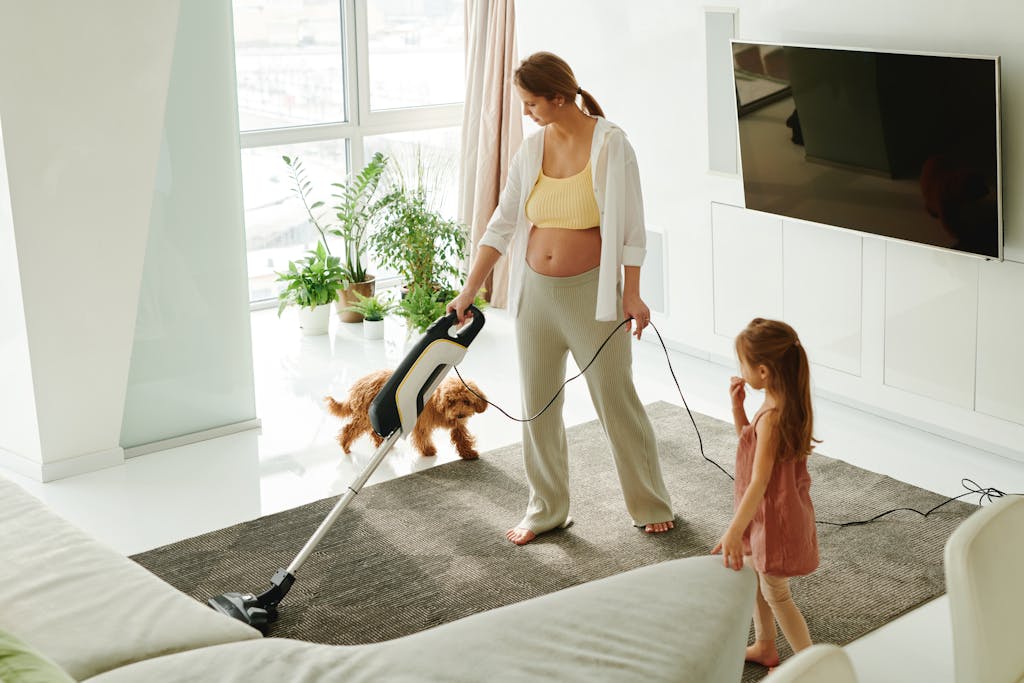
Myths About Natural Cleaning: What Actually Works?
There’s a lot of misinformation out there about natural cleaning. Some people think non-toxic products don’t work as well, while others assume you have to make everything from scratch. The truth? Natural cleaning is just as effective—when done right. Let’s break down the biggest myths.
Myth #1: Natural Cleaners Don’t Kill Germs
Many people believe you need harsh antibacterial chemicals to disinfect surfaces, but that’s not true. Ingredients like hydrogen peroxide, alcohol (at least 60%), and vinegar have been proven to kill bacteria and viruses effectively. While vinegar alone doesn’t disinfect against all pathogens, hydrogen peroxide is a powerful natural disinfectant that hospitals even use.
Myth #2: Green Cleaning Means DIY Only
Not everyone has the time (or desire) to mix their own cleaners, and the good news is—you don’t have to. There are plenty of store-bought non-toxic brands that meet strict safety standards. The key is looking for transparent ingredient lists and third-party certifications like MADE SAFE, ECOCERT, or Cradle to Cradle Certified.
Myth #3: If a Cleaner Says “Plant-Based,” It’s Safe
Just because something is labeled “plant-based” doesn’t mean it’s non-toxic. Many so-called green cleaners still contain synthetic fragrances, harsh preservatives like phenoxyethanol, and petroleum-derived surfactants. The best way to know if a product is truly safe is to read the label and look for full ingredient disclosure.
Myth #4: More Suds = More Cleaning Power
Many people associate suds with effectiveness, but foaming agents like SLS (sodium lauryl sulfate) don’t actually clean—they just make bubbles. In fact, SLS can be irritating to the skin and unnecessary in most cleaners. A low-sudsing formula can still cut through grease and grime just as well.
Myth #5: Non-Toxic Cleaning is Expensive
Switching to safer cleaners doesn’t have to cost more. Many affordable, non-toxic brands are available, and simple household staples like vinegar, baking soda, and castile soap are some of the cheapest cleaning products you can buy. Plus, when you’re not constantly buying multiple specialty cleaners, you end up saving money in the long run.
Myth #6: You Need Bleach for a Deep Clean
Bleach is often marketed as the ultimate cleaner, but it’s not always necessary. Hydrogen peroxide, alcohol, and even steam cleaning can disinfect without the toxic fumes. Bleach can also create harmful byproducts when mixed with other cleaners, making it more dangerous than helpful in many cases
How to Transition to Non-Toxic Cleaning Without Overwhelm
Switching to non-toxic cleaning doesn’t have to be an all-or-nothing process. You don’t need to throw out everything under your sink overnight. A slow, intentional transition will save you stress, money, and decision fatigue. Here’s how to make the switch in a way that actually sticks.
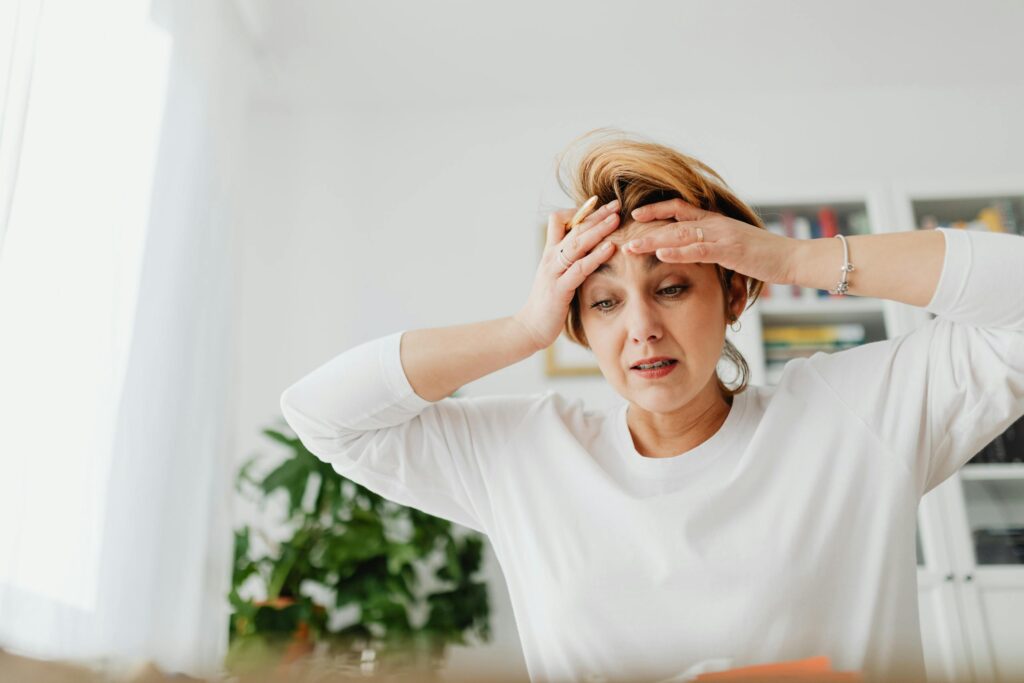
1. Replace Products as You Run Out
One of the easiest ways to transition is to swap products one at a time. When your all-purpose cleaner runs out, replace it with a non-toxic option. When your laundry detergent is low, find a safer brand. This prevents waste and makes the switch feel manageable.
2. Start with the Products You Use Most
Think about the cleaners you use daily—probably an all-purpose spray, dish soap, and laundry detergent. These have the biggest impact on your health and home air quality, so they’re great places to start.
3. Ditch the Most Toxic Offenders First
Some products are worse than others. The first ones to go should be anything with:
4. Find Trusted Non-Toxic Brands
If you don’t want to DIY your own cleaners, look for brands that fully disclose ingredients and have strict third-party certifications. MADE SAFE, ECOCERT, and Cradle to Cradle Certified are great options. If a brand doesn’t list all ingredients, assume there’s something to hide.
5. Simplify Your Cleaning Routine
You don’t need a different cleaner for every surface in your home. A high-quality all-purpose spray, dish soap, and a natural disinfectant can handle most tasks. Cutting back on products makes the transition easier and reduces clutter.
6. Switch to Safer Tools
Your cleaners aren’t the only thing to consider—many conventional sponges and wipes contain synthetic chemicals and microplastics. Swap them out for:
7. Give Yourself Grace—Progress Over Perfection
It’s easy to feel overwhelmed or guilty when you learn how toxic conventional cleaning products can be. But making small, intentional changes over time is better than stressing over perfection. Focus on progress, not an overnight transformation.
A non-toxic home is built one choice at a time. The key is consistency, not speed—and before you know it, your cleaning routine will be safer, healthier, and just as effective.
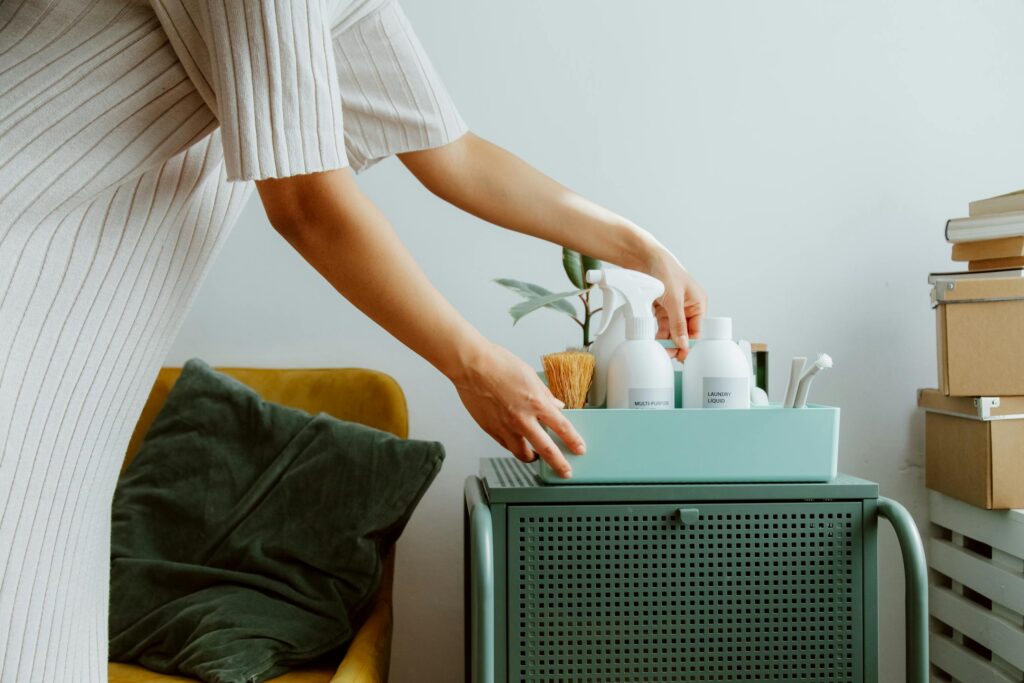
Non-Toxic Spring Cleaning questions
Final Thoughts: A Healthier, Chemical-Free Spring Clean
join the newsletter
Want more non-toxic guides? Subscribe today.
